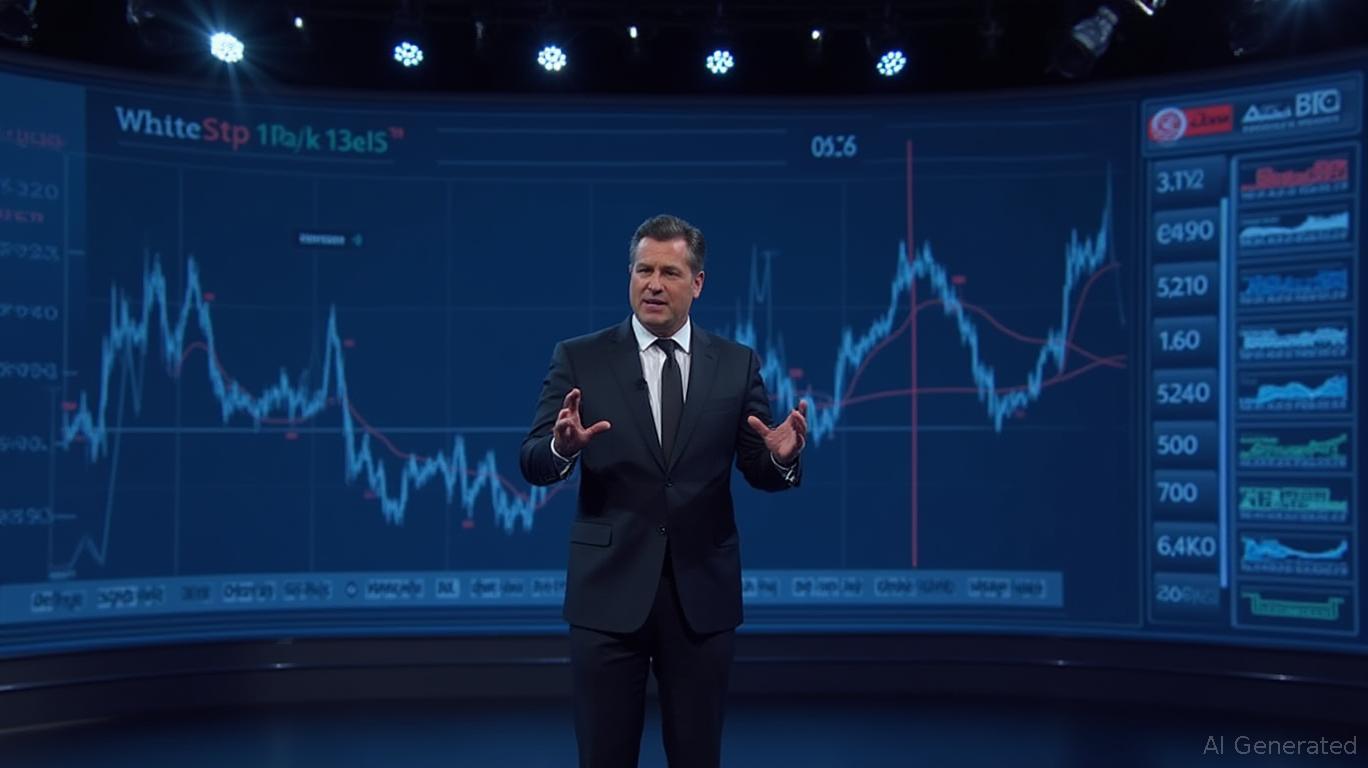Trump's Tariffs and Tesla's Delays: Navigating Market Volatility and EV Challenges
The U.S. stock market faces a perfect storm of geopolitical tensions and corporate struggles, with the Dow Jones Industrial Average plunging 820 points on April 10, 2025, amid renewed tariff uncertainty and Tesla’s delayed EV production. This article examines the intersection of trade policy, earnings reports, and supply chain hurdles shaping investor sentiment—and where opportunities or pitfalls may lie.
The Tariff Factor: Market Volatility and Global Trade Wars

President Trump’s temporary 90-day tariff reprieve for most countries (excluding China) sparked a historic 9% rally in the S&P 500 on April 9—a record since WWII—only to be reversed by fears of prolonged trade conflict. The Dow Jones’ 2% drop on April 10 underscores lingering risks:
- China’s 125% tariffs on U.S. goods remain intact, with reciprocal U.S. levies pushing effective rates to 23% (Morgan Stanley).
- Inflation risks loom: U.S. CPI could hit 4% by year-end, double the Fed’s target, due to tariff-driven costs.
The tech sector bore the brunt, with Nvidia (-4.9%) and Meta (-3.7%) falling sharply. Even Apple’s shares, which surged 15% during the tariff pause, dipped 3% as investors questioned long-term supply chain resilience.
Tesla’s Production Woes: A Microcosm of EV Industry Struggles

Tesla’s Q1 2025 results reveal deeper vulnerabilities in its growth story:
- Deliveries fell 13% YoY to 336,681 vehicles, missing estimates by 24,000 units. Europe’s market share halved to 9.3%, while China’s sales dropped 11.5%.
- Production delays for the Model Y Juniper cost "several weeks" of output, pushing gross margins toward $5,000 per vehicle—a 40% drop from 2023 levels.
- U.S. tariffs on Mexican/Chinese parts could add $2,500–$4,500 per vehicle, further squeezing margins.
Analysts now expect Tesla’s 2025 revenue to grow just 9.4%, down from a 19.5% target at the start of the year.
Earnings Season: Beyond Tesla—A Mixed Bag for Autos and Tech
While Tesla’s struggles dominate headlines, broader sector trends paint a cautious picture:
- CarMax (-7.2%) missed earnings due to declining used-car demand.
- Constellation Brands (-3%) warned of weak 2026 guidance despite Q4 beats.
- Chipmakers (Intel, Micron) fell 5–7% as trade wars threaten semiconductor supply chains.
Yet not all news is bleak:
- Levi Strauss (+10%) gained after being upgraded by Bank of America for its China-free supply chain.
- Carnival Cruise Line (+3%) saw upgrades as recession risks remain moderate.
Looking Ahead: Risks and Opportunities in 2025
The market’s path hinges on three critical factors:
- Tariff Resolution: A July 9 deadline looms for the 90-day reprieve. If China’s tariffs remain at 125%, GDP could lose 1–1.5% growth (Capital Economics).
- Tesla’s Turnaround: Delivering 491,000 vehicles per quarter from Q2 onward—nearly impossible given historical trends—requires flawless execution.
- Fed Policy: Chair Powell’s “wait-and-see” stance leaves room for rate cuts if inflation cools.
Conclusion: A Market of Contrasts
The Dow’s volatility and Tesla’s stumble reflect a broader truth: geopolitical risks and corporate execution are now inextricably linked.
- Investors in defensive sectors (e.g., pharmaceuticals, utilities) may find shelter as trade wars escalate.
- Tech and automotive stocks, however, face headwinds: tariffs, supply chain bottlenecks, and slowing demand.
Tesla’s 36% Q1 stock drop—erasing $460 billion in market cap—highlights the perils of over-reliance on one model and one CEO. Meanwhile, the Dow’s 2% April 10 decline signals that markets are pricing in prolonged uncertainty.
The path forward? Look for companies with diverse supply chains (like Levi Strauss) and sectors insulated from trade wars. For now, caution—and a watchful eye on tariff deadlines—remain the watchwords.
Final Analysis: The market’s fate in 2025 hinges on whether Trump’s tariffs and Tesla’s delays become fleeting setbacks or defining trends. With earnings misses and inflation risks mounting, investors would be wise to prioritize resilience over growth.










